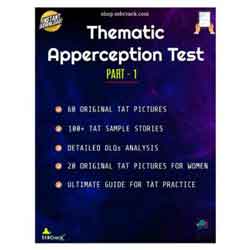Launchers or Launch Vehicles are used to carry spacecraft to space. India has two operational launchers: Polar Satellite Launch Vehicle (PSLV) and Geosynchronous Satellite Launch Vehicle (GSLV).
GSLV with indigenous Cryogenic Upper Stage has enabled the launching up to 2 tonne class of communication satellites. The next variant of GSLV is GSLV Mk III, with indigenous high thrust cryogenic engine and stage, having the capability of launching 4 tonne class of communication satellites.
In order to achieve high accuracy in placing satellites into their orbits, a combination of accuracy, efficiency, power and immaculate planning are required. ISRO’s Launch Vehicle Programme spans numerous centres and employs over 5,000 people.
Vikram Sarabhai Space Centre, located in Thiruvananthapuram, is responsible for the design and development of launch vehicles. Liquid Propulsion Systems Centre and ISRO Propulsion Complex, located at Valiamala and Mahendragiri respectively, develop the liquid and cryogenic stages for these launch vehicles.
Satish Dhawan Space Centre, SHAR, is the space port of India and is responsible for integration of launchers. It houses two operational launch pads from where all GSLV and PSLV flights take place.
7 Rockets Launchers Made by ISRO
Sounding Rockets:
- Sounding Rockets Are One Or Two-Stage Solid Propellant Rockets Used For Probing The Upper Atmospheric Regions And For Space Research. They Also Serve As Easily Affordable Platforms To Test Or Prove Prototypes Of New Components Or Subsystems Intended For Use In Launch Vehicles And Satellites.
- It Was India’s First Experimental Satellite Launch Vehicle, Which Was An All Solid, Four Stage Vehicle Weighing 17 Tonnes With A Height Of 22m And Capable Of Placing 40 Kg Class Payloads In Low Earth Orbit (LEO).
- SLV-3 Was Successfully Launched On July 18, 1980, From Sriharikota Range (SHAR), When Rohini Satellite, RS-1, Was Placed In Orbit, Thereby Making India The Sixth Member Of An Exclusive Club Of Space-faring Nations.
- SLV-3 Employed An Open Loop Guidance (With Stored Pitch Programme) To Steer The Vehicle In-Flight Along A Pre-determined Trajectory. The First Experimental Flight Of SLV-3, In August 1979, Was Only Partially Successful.
- Apart From The July 1980 Launch, There Were Two More Launches Held In May 1981 And April 1983, Orbiting Rohini Satellites Carrying Remote Sensing Sensors.
- The Successful Culmination Of The SLV-3 Project Showed The Way To Advanced Launch Vehicle Projects Such As The Augmented Satellite Launch Vehicle (ASLV), PSLV & GSLV.

Augmented Satellite Launch Vehicle (ASLV):
- With A Lift-Off Weight Of 40 Tonnes, The 24 M Tall ASLV Was Configured As A Five Stage, All-solid Propellant Vehicle, With A Mission Of Orbiting 150 Kg Class Satellites Into 400 Km Circular Orbits.
- The ASLV Programme Was Designed To Augment The Payload Capacity To 150 Kg, Thrice That Of SLV-3, For Low Earth Orbits (LEO).
- While Building Upon The Experience Gained From The SLV-3 Missions, ASLV Proved To Be A Low-Cost Intermediate Vehicle To Demonstrate And Validate Critical Technologies.
- Under The ASLV Programme, Four Developmental Flights Were Conducted. The First Developmental Flight Took Place On March 24, 1987, And The Second On July 13, 1988.
- The Third Developmental Flight On May 20, 1992, When SROSS-C (106 Kg) Was Put Into An Orbit Of 255 X 430 Km. ASLV-D4, Launched On May 4, 1994, Orbited SROSS-C2 Weighing 106 Kg.
- SSB Interview eBook Pack
- Thematic Apperception Test – TAT
- Lecturette Topics Part-1 eBook [100 Topics]
- Word Association Test – WAT
- Situation Reaction Test – SRT
- Officers Intelligence Test – OIR
Polar Satellite Launch Vehicle (PSLV):
- Polar Satellite Launch Vehicle (PSLV) Is The 3rd Generation Launch Vehicle Of India. It Is The First Indian Launch Vehicle To Be Equipped With Liquid Stages. After Its First Successful Launch In October 1994.
- PSLV Emerged As The Reliable And Versatile Workhorse Launch Vehicle Of India With 39 Consecutively Successful Missions By June 2017. During The 1994-2017 Period, The Vehicle Launched 48 Indian Satellites And 209 Satellites For Customers From Abroad.
- Besides, The Vehicle Successfully Launched Two Spacecraft: Chandrayaan-1 In 2008 And Mars Orbiter Spacecraft In 2013 – That Later Traveled To Moon And Mars, Respectively. Recently The 54th Mission PSLV-C52/EOS-04 Mission Was Launched On Feb 14th, 2022.

Geosynchronous Satellite Launch Vehicle (GSLV):
- Geosynchronous Satellite Launch Vehicle Mark-II (GSLV Mk II) Is The Largest Launch Vehicle Developed By India, Which Is Currently In Operation. This Fourth Generation Launch Vehicle Is A Three-Stage Vehicle With Four Liquid Strapons.
- The Indigenously Developed Cryogenic Upper Stage (CUS), Which Is Flight Proven, Forms The Third Stage Of GSLV Mk II. Since January 2014, The Vehicle Has Achieved Four Consecutive Successes. The Recent Mission GSLV-F10 / EOS-03 On Aug 12, 2021, Was Unsuccessful.
GSLV Mk III:
- GSLV Mk III, Chosen To Launch Chandrayaan-2 Spacecraft, Is A Three-stage Heavy Lift Launch Vehicle Developed By ISRO. The Vehicle Has Two Solid Strapons, A Core Liquid Booster, And A Cryogenic Upper Stage.
- It Is Designed To Carry 4 Ton Class Of Satellites Into Geosynchronous Transfer Orbit (GTO) Or About 10 Tons To Low Earth Orbit (LEO), Which Is About Twice The Capability Of The GSLV Mk II.
- The Two Strap-on Motors Of GSLV Mk III Are Located On Either Side Of Its Core Liquid Booster. Designated As ‘S200’, Each Carries 205 Tons Of Composite Solid Propellant And Their Ignition Results In-Vehicle Lift-off.
- The First Experimental Flight Of LVM3, The LVM3-X/CARE Mission Lifted Off From Sriharikota On December 18, 2014, And Successfully Tested The Atmospheric Phase Of Flight.
- The First Developmental Flight Of GSLV Mk III, The GSLV-MK III-D1 Successfully Placed GSAT-19 Satellite To A Geosynchronous Transfer Orbit (GTO) On June 05, 2017, From SDSC SHAR, Sriharikota.
- GSLV MK III-D2, The Second Developmental Flight Successfully Launched GSAT-29, A High Throughput Communication Satellite On November 14, 2018, From Satish Dhawan Space Centre Shar, Sriharikota
- GSLV MK III-M1, Successfully Injected Chandrayaan-2, India’s Second Lunar Mission, Into Earth Parking Orbit On July 22, 2019, From Satish Dhawan Space Centre Shar, Sriharikota. The Recent Mission Was GSLV-Mk III – M1 / Chandrayaan-2 Mission OnJul 22, 2019.
Reusable Launch Vehicle – Technology Demonstrator (RLV-TD):
- It Is One Of The Most Technologically Challenging Endeavors Of ISRO Towards Developing Essential Technologies For A Fully Reusable Launch Vehicle To Enable Low-Cost Access To Space.
- The Configuration Of RLV-TD Is Similar To That Of An Aircraft And Combines The Complexity Of Both Launch Vehicles And Aircraft. The Winged RLV-TD Has Been Configured To Act As A Flying Test Bed To Evaluate Various Technologies, Namely, Hypersonic Flight, Autonomous Landing, And Powered Cruise Flight.
- In The Future, This Vehicle Will Be Scaled Up To Become The First Stage Of India’s Reusable Two-stage Orbital Launch Vehicle. RLV-TD Consists Of A Fuselage (Body), A Nose Cap, Double Delta Wings, And Twin Vertical Tails.
- It Also Features Symmetrically Placed Active Control Surfaces Called Elevons And Rudder. This Technology Demonstrator Was Boosted To Mach No: 5 By A Conventional Solid Booster (HS9) Designed For Low Burn Rate.
- The Selection Of Materials Like Special Alloys, Composites, And Insulation Materials For Developing An RLV-TD And The Crafting Of Its Parts Is Very Complex And Demands Highly Skilled Manpower. Many High Technology Machinery And Test Equipment Have Been Utilised For Building This Vehicle.
- Objectives Of RLV-TD:
- Hypersonic Aero Thermodynamic Characterization Of Wing Body
- Evaluation Of Autonomous Navigation, Guidance, And Control (NGC) Schemes
- Integrated Flight Management
- Thermal Protection System Evaluation
- Achievements: RLV-TD Was Successfully Flight Tested On May 23, 2016, From SDSC SHAR Sriharikota Validating Critical Technologies Such As Autonomous Navigation, Guidance & Control, Reusable Thermal Protection System, And Re-entry Mission Management.
Scramjet Engine – TD:
- The First Experimental Mission Of ISRO’s Scramjet Engine Towards The Realization Of An Air Breathing Propulsion System Was Successfully Conducted On August 28, 2016, From Satish Dhawan Space Centre SHAR, Sriharikota.
- After A Flight Of About 300 Seconds, The Vehicle Touched Down In The Bay Of Bengal, Approximately 320 Km From Sriharikota. The Vehicle Was Successfully Tracked During Its Flight From The Ground Stations At Sriharikota.
- With This Flight, Critical Technologies Such As The Ignition Of Air Breathing Engines At Supersonic Speed, Holding The Flame At Supersonic Speed, Air Intake Mechanism, And Fuel Injection Systems Have Been Successfully Demonstrated.
- The Scramjet Engine Designed By ISRO Uses Hydrogen As Fuel And The Oxygen From The Atmospheric Air As The Oxidizer. This Test Was The Maiden Short Duration Experimental Test Of ISRO’s Scramjet Engine With A Hypersonic Flight At Mach 6.
- ISRO’s Advanced Technology Vehicle (ATV), Which Is An Advanced Sounding Rocket, Was The Solid Rocket Booster Used For The Test Of Scramjet Engines At Supersonic Conditions. ATV Carrying Scramjet Engines Weighed 3277 Kg At Lift-off.














